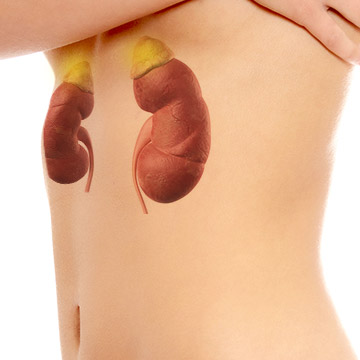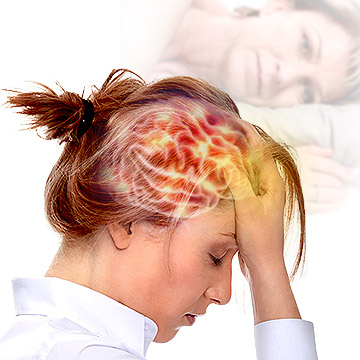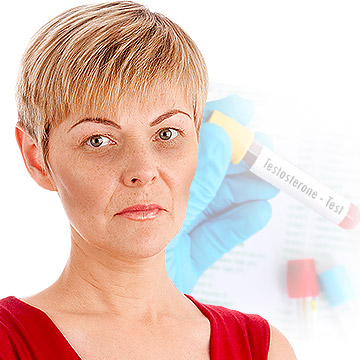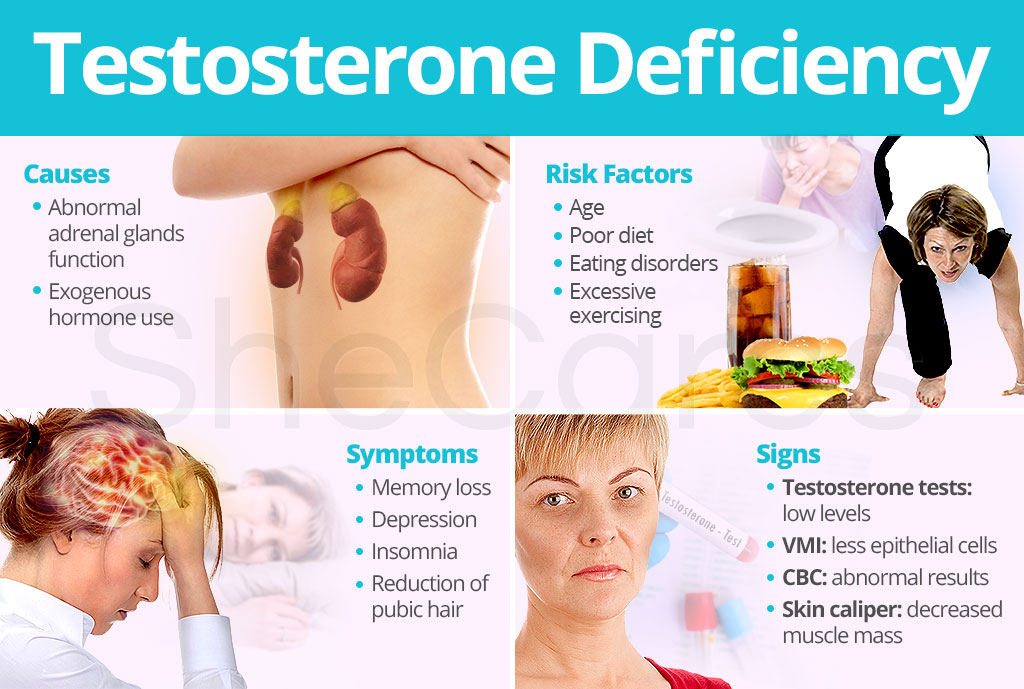Suffering from a testosterone deficiency brings about its own list of causes, risk factors, signs, and symptoms that are distinct from those of low testosterone levels.
Discover more about this severe hormonal imbalance as a way to stave off what could turn into a life-threatening complication.
What Is Testosterone Deficiency?
A testosterone deficiency is distinct from low testosterone levels as it is a condition in which a woman has consistently low testosterone levels caused by natural or induced causes as well as lifestyle factors. Also, a testosterone deficiency is incessant and long-lasting. Whereas, low testosterone levels are usually only temporary.
Keep in mind that testosterone serves various roles in the female body. The hormone not only improves women's confidence and sex drive, but it also promotes muscle development, bone growth, the production of red blood cells, and more. It also encourages the health of the skin, brain, and other body systems.
Causes of Testosterone Deficiency

Detecting the cause of a testosterone deficiency is a crucial step needing completion before treatment is pursued. Because the endocrine system is multi-faceted and depends on the healthy rhythm of all hormones to function properly, a testosterone imbalance affects more than just the androgen's functions.
Some of the main causes of testosterone deficiency include:
Abnormal gland function. Adrenal insufficiency and pituitary gland dysfunction - as is the case with hyperprolactinaemia, which is an overproduction of the pituitary hormone prolactin, and hypopituitarism - have been found to cause lower testosterone levels in women.
Exogenous hormone use. Taking gonadotropin-releasing hormone (GnRH) inhibitors, glucocorticoids, or exogenous estrogens may cause a testosterone deficiency. Specifically, postmenopausal estrogen therapy and oral contraceptives both suppress testosterone amounts by increasing the binding protein for testosterone, making it less available for action, and shutting down ovarian production of testosterone, respectively.
Risk Factors of Testosterone Deficiency

Moreover, there are a variety of risk factors that put women at jeopardy of suffering from a testosterone deficiency.
- Health risk factors. The odds of having a testosterone deficiency may increase with:
- Age. Testosterone production will slightly decline with age as women enter the menopausal transition into postmenopause. As a matter of fact, testosterone peaks in a woman's 20s and drops slowly thereafter.
- Behavioral risk factors. Testosterone deficiency is linked to various behaviors, including:
- Extreme exercise routines. An intensive exercise schedule can lead to low testosterone levels and an increase in cortisol levels at the same time.
- Poor diet. In premenopausal women, studies suggest that that low-fat diets decrease levels of non-protein-bound (or bioavailable) testosterone.
- Eating disorders. Total and free testosterone levels decrease in women suffering from anorexia nervosa. Also, free testosterone and its androgen precursor dehydroepiandrosterone sulfate (DHEA-S) are markedly decreased in women with anorexia nervosa who are also on birth control pills.
Testosterone Deficiency Symptoms

Low self-esteem, irritability, low libido, and changes in voice are some of the “normal” symptoms related to suffering from low testosterone levels. As a matter of fact, many testosterone deficiency symptoms are comparable to those of low testosterone levels, just more serious and continual.
These dire symptoms of having a testosterone deficiency include:
- Memory loss
- Depression
- Reduction of pubic hair
- Insomnia
- Migraines and headaches
- Vaginal vasocongestion
- Reduction in muscle mass
- Vasomotor symptoms
- And more
Complications of Testosterone Deficiency
When testosterone deficiency symptoms continuously build up without proper management or treatment, they become complications. The following are a few medical concerns paired with their observable side effects for easier recognition:
- Female-patterned baldness
- Gradual thinning at the part line
- Diffuse hair loss radiating from top of head
- Feeling that hair is not as thick as normal
- Osteoporosis
- Bone fracture (hip, wrist, spine)
- Low bone mineral density: BMD T-score -2.5 or less
- FRAX test: ≥ 3% for hip fracture or ≥ 20% for major osteoporotic fracture
- Positive OST test: Moderate to high risk (10-year risk of fracture ≥ 10% or > 20%)
- SCORE test results: Moderate risk (7 – 15 points), High risk (16 – 50 points)
- Anemia
- Fatigue
- Shortness of breath
- Pale or yellowish skin
- Cold hands and feet
- Chest pain
Signs of Testosterone Deficiency

The following test results will be reviewed by a trusted healthcare professional to diagnose a hormonal imbalance after identifying testosterone deficiency symptoms:
- Skin caliper shows decreased muscle mass (results recorded monthly for at least 3 months)
- Vaginal maturation index (VMI) showing few superficial epithelial cells (indicating vaginal atrophy)
- Complete blood count (CBC) signifying anemia
- Testosterone tests (blood, saliva, or urine) showing low levels for extended period of time
Overall, because hormones are intricately intertwined with each other, a testosterone deficiency will affect more than just a woman's sexual health. Continue reading more about increasing testosterone through food, diet, and supplements to amend any symptoms once and for all.
Sources
- The American Congress of Obstetricians and Gynecologists. (2011). Osteoporosis. Retrieved August 6, 2018, from http://www.acog.org/Patients/FAQs/Osteoporosis
- Harvard Health Publishing. (2015). Treating female pattern hair loss. Retrieved August 6, 2018, from https://www.health.harvard.edu/staying-healthy/treating-female-pattern-hair-loss
- Jakiel, G. & Baran, A. (2005). Androgen deficiency in women. Endokrynologia Polska, 56(6), 1016-1020. Retrieved August 6, 2018, from https://www.ncbi.nlm.nih.gov/pubmed/16821229
- Mayo Clinic. (2017). Anemia: Symptoms & causes. Retrieved August 6, 2018, from https://www.mayoclinic.org/diseases-conditions/anemia/symptoms-causes/syc-20351360
- Miller, K.K. (2001). Androgen Deficiency in Women. The Journal of Clinical Endocrinology & Metabolism, 86(6), 2395-2401. doi: 10.1210/jcem.86.6.7610
- Miller, K.K. et al. (2007). Androgens in Women with Anorexia Nervosa and Normal-Weight Women with Hypothalamic Amenorrhea. The Journal of Clinical Endocrinology & Metabolism, 92(4), 1334-1339. doi: 10.1210/jc.2006-2501
- Vaamonde, D. et al. (Eds.). (2016). Exercise and Human Reproduction: Induced Fertility Disorders and Possible Therapies. New York: Springer. Available from Google Books.
- Victoria State Government. (n.d.). Androgen deficiency in women. Retrieved July 18, 2018, from https://www.betterhealth.vic.gov.au/health/conditionsandtreatments/androgen-deficiency-in-women
- Warren, M.P. (1999). Health Issues for Women Athletes: Exercise- Induced Amenorrhea. The Journal of Clinical Endocrinology & Metabolism, 84(6), 1892-1896. doi: 10.1210/jcem.84.6.5806
